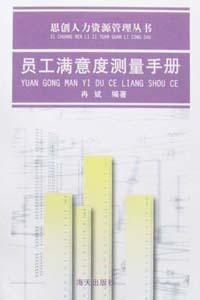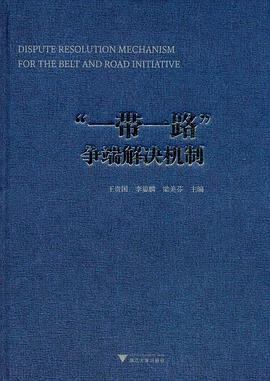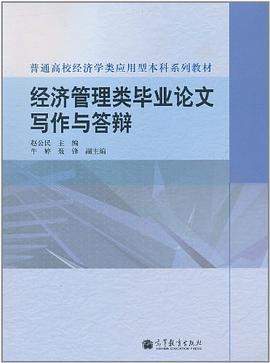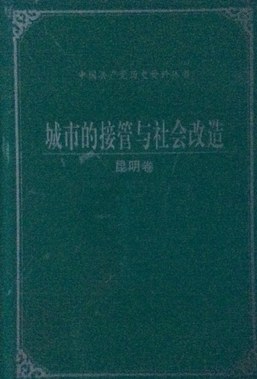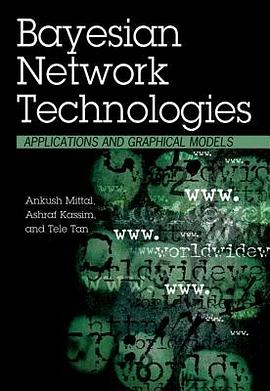

具体描述
本书作者根据现实生活中的语言和英语语料库中的大量资料, 对习语的作用进行了
分析,并提出了对习语的新见解。作者运用了许多生动翔实、具有代表性的例子,将
习语置于语言环境中,阐述了习语作为一种约定俗成、简单而有效的语言形式在人们
语言交流中所起的作用——从单纯的表达意义的功能,到反映对话者之间关系的交际
功能,直至使文章通顺、流畅、连贯的联系功能。
作者简介
目录信息
Acknowledgements
The author and series editors
Foreword
Text data, its sources, and presentation
1 Review and setting
1.1 Introduction
1.2 Lexically and grammatically regular idioms
1.2.1 A. Makkai (1972)
1.2.2 U. Weinreich (1969)
1.2.3 B. Fraser (1970)
1.2.4 A.P. Cowie and R. Mackin (1975); A. P. Cowie,
R. Mackin, and I. R. McCaig (1983)
1.2.5 J. Strassler (1982)
1.2.6 Conclusions
1.3 Idiosyncratic idioms
1.3.1 M.H. Roberts (1944); L. P. Smith (1925);
O. Jespersen (1924); C. Fillmore, P. Kay, and
M. C. O'Connor (1988)
1.3.2 Conclusions
1.4 About this book
.2 Conventional ways of saying
2.1 The novel and the conventional in language
2.1.1 Introduction
2.1.2 Idioms and idiomaticity
2.1.3 Idioms, semi-idioms, literal idioms, and
habitual collocations
2.1.4 Conclusions
2.2 The lexicogrammar of idioms
2.2.1 Introduction
2.2.2 Compounds, phrases, semi-clauses, and clauses
2.3 Idioms and transformations
2.3.1 Introduction
2.3.2 Replacements or substitutions
2.3.3 Additions
2.3.4 Permutations
2.3.5 Deletions
2.3.6 Summary and conclusions on the
transformations in idioms
2.4 The collocability of idioms
2.5 The semantics of pure and semi-idioms
2.5.1 Semantic unity
2.5.2 Non-literalness
2.5.3 Summary and conclusions on the semantics
of idioms
2.6 Idioms: indicators of conventionality
2.6.1 Introduction
2.6.2 Conventionality and currency
2.6.3 Conventionality and frequency
2.7 Categorizing idioms
2.7.1 Lexicogrammatical categorizations
2.7.2 Functional categorizations
2.8 Conclusions on idioms
2.9 Idiomatic usage: an exercise in comparative usage
2.9.1 Introduction
2.9.2 English verb formations and bracketing in
relation to German
2.9.3 Sinhala: verb formations and deletion in
relation to English
2.9.4 Lankan English
2.9.5 Australian English
2.9.6 Conclusions
2.10 General conclusions: conventionalized ways of saying
3 Ideational idiomatic expressions: images
of the world
3.1 Vocabulary as an analogue of the world and its ways
3.1.1 Introduction
3.1.2 Images of the world: generalities
3.1.3 Images of the world: the vague
3.1.4 Images of the world: specificities
3.1.5 Conclusions
3.2 Images of the world: the politics of Jane and Joe Bloggs
3.2.1 Introduction
3.2.2 The politics of the Bloggs: the emperor's new
clothes
3.2.3 The politics of the Bloggs: red herrings
3.2.4 Conclusions
3.3 Images of the world: inside Jane and Joe Bloggs
3.3.1 Introduction
3.3.2 The heart and the head of the Bloggs
3.3.3 The states of the heart: joy
3.3.4 The states of the heart: grief
3.3.5 The states of the heart: anger
3.3.6 Conclusions
3.4 Men, women, manners, and morals: attitudinal
appraisals
3.4.1 Introduction
3.4.2 Attitudes in discourse
3.4.3 Appraisals of manners and morals
3.4.4 Conclusions
3.5 The world, language, and language-users
3.6 Conclusions
4 Interpersonal idiomatic expressions:
conviviality and conflict in verbal interactions
4.1 Interpersonal idiomatic expressions: vehicles of
participation and exchange
4.1.1 Introduction
4.1.2 Interpersonal idiomatic expressions as markers
of conviviality: politeness routines
4.1.3 Service encounters
4.1.4 Small talk
4.2 Institutionalized good wishes and sympathy
4.2.1 Introduction
4.2.2 Christmas and New Year greetings
4.2.3 Birthday greetings
4.2.4 Condolence, sympathy, and congratulations
4.3 Forums: information-oriented talk
4.3.1 Introduction
4.3.2 Endorsements
4.3.3 Mitigation
4.3.4 Generosity
4.3.5 Informing strategies
4.3.6 Conclusions
4.4 Interpersonal idiomatic expressions as markers of
conflict
4.4.1 Introduction
4.4.2 Conflict
4.4.3 Conclusions
4.5 General conclusions
5 Relational idiomatic expressions in exposition
and narrative
5.1 Relational idiomatic expressions: vehicles of
logical and temporal coherence
5.1.1 Introduction
5.1.2 Anaphoric and conjunctive idiomatic expressions
in action
5.1.3 Conclusions
5.2 Temporal idiomatic expressions in action
5.2.1 Introduction: public and personal time
5.2.2 Public time
5.2.3 Personal time
5.3 General conclusions
6 Idiomatic expressions as vocabulary resource:
interdependencies, interconnections, and
practicalities
6.1 What this chapter is about
6.2 The general and the specific reconsidered
6.3 Currency reconsidered
6.4 Topic-related collocations
6.5 Idioms, topic, theme: the role of vocabulary in getting
the message across
6.6 Practicalities
6.6.1 Introduction
6.6.2 The role of idioms in language learning
6.7 Interlocutor, thinker, and experiencer/reporter
6.8 Conclusions
Appendix
Glossary
Bibliography
Index
· · · · · · (收起)
The author and series editors
Foreword
Text data, its sources, and presentation
1 Review and setting
1.1 Introduction
1.2 Lexically and grammatically regular idioms
1.2.1 A. Makkai (1972)
1.2.2 U. Weinreich (1969)
1.2.3 B. Fraser (1970)
1.2.4 A.P. Cowie and R. Mackin (1975); A. P. Cowie,
R. Mackin, and I. R. McCaig (1983)
1.2.5 J. Strassler (1982)
1.2.6 Conclusions
1.3 Idiosyncratic idioms
1.3.1 M.H. Roberts (1944); L. P. Smith (1925);
O. Jespersen (1924); C. Fillmore, P. Kay, and
M. C. O'Connor (1988)
1.3.2 Conclusions
1.4 About this book
.2 Conventional ways of saying
2.1 The novel and the conventional in language
2.1.1 Introduction
2.1.2 Idioms and idiomaticity
2.1.3 Idioms, semi-idioms, literal idioms, and
habitual collocations
2.1.4 Conclusions
2.2 The lexicogrammar of idioms
2.2.1 Introduction
2.2.2 Compounds, phrases, semi-clauses, and clauses
2.3 Idioms and transformations
2.3.1 Introduction
2.3.2 Replacements or substitutions
2.3.3 Additions
2.3.4 Permutations
2.3.5 Deletions
2.3.6 Summary and conclusions on the
transformations in idioms
2.4 The collocability of idioms
2.5 The semantics of pure and semi-idioms
2.5.1 Semantic unity
2.5.2 Non-literalness
2.5.3 Summary and conclusions on the semantics
of idioms
2.6 Idioms: indicators of conventionality
2.6.1 Introduction
2.6.2 Conventionality and currency
2.6.3 Conventionality and frequency
2.7 Categorizing idioms
2.7.1 Lexicogrammatical categorizations
2.7.2 Functional categorizations
2.8 Conclusions on idioms
2.9 Idiomatic usage: an exercise in comparative usage
2.9.1 Introduction
2.9.2 English verb formations and bracketing in
relation to German
2.9.3 Sinhala: verb formations and deletion in
relation to English
2.9.4 Lankan English
2.9.5 Australian English
2.9.6 Conclusions
2.10 General conclusions: conventionalized ways of saying
3 Ideational idiomatic expressions: images
of the world
3.1 Vocabulary as an analogue of the world and its ways
3.1.1 Introduction
3.1.2 Images of the world: generalities
3.1.3 Images of the world: the vague
3.1.4 Images of the world: specificities
3.1.5 Conclusions
3.2 Images of the world: the politics of Jane and Joe Bloggs
3.2.1 Introduction
3.2.2 The politics of the Bloggs: the emperor's new
clothes
3.2.3 The politics of the Bloggs: red herrings
3.2.4 Conclusions
3.3 Images of the world: inside Jane and Joe Bloggs
3.3.1 Introduction
3.3.2 The heart and the head of the Bloggs
3.3.3 The states of the heart: joy
3.3.4 The states of the heart: grief
3.3.5 The states of the heart: anger
3.3.6 Conclusions
3.4 Men, women, manners, and morals: attitudinal
appraisals
3.4.1 Introduction
3.4.2 Attitudes in discourse
3.4.3 Appraisals of manners and morals
3.4.4 Conclusions
3.5 The world, language, and language-users
3.6 Conclusions
4 Interpersonal idiomatic expressions:
conviviality and conflict in verbal interactions
4.1 Interpersonal idiomatic expressions: vehicles of
participation and exchange
4.1.1 Introduction
4.1.2 Interpersonal idiomatic expressions as markers
of conviviality: politeness routines
4.1.3 Service encounters
4.1.4 Small talk
4.2 Institutionalized good wishes and sympathy
4.2.1 Introduction
4.2.2 Christmas and New Year greetings
4.2.3 Birthday greetings
4.2.4 Condolence, sympathy, and congratulations
4.3 Forums: information-oriented talk
4.3.1 Introduction
4.3.2 Endorsements
4.3.3 Mitigation
4.3.4 Generosity
4.3.5 Informing strategies
4.3.6 Conclusions
4.4 Interpersonal idiomatic expressions as markers of
conflict
4.4.1 Introduction
4.4.2 Conflict
4.4.3 Conclusions
4.5 General conclusions
5 Relational idiomatic expressions in exposition
and narrative
5.1 Relational idiomatic expressions: vehicles of
logical and temporal coherence
5.1.1 Introduction
5.1.2 Anaphoric and conjunctive idiomatic expressions
in action
5.1.3 Conclusions
5.2 Temporal idiomatic expressions in action
5.2.1 Introduction: public and personal time
5.2.2 Public time
5.2.3 Personal time
5.3 General conclusions
6 Idiomatic expressions as vocabulary resource:
interdependencies, interconnections, and
practicalities
6.1 What this chapter is about
6.2 The general and the specific reconsidered
6.3 Currency reconsidered
6.4 Topic-related collocations
6.5 Idioms, topic, theme: the role of vocabulary in getting
the message across
6.6 Practicalities
6.6.1 Introduction
6.6.2 The role of idioms in language learning
6.7 Interlocutor, thinker, and experiencer/reporter
6.8 Conclusions
Appendix
Glossary
Bibliography
Index
· · · · · · (收起)
读后感
评分
评分
评分
评分
评分
用户评价
评分
全英文的
评分全英文的
评分全英文的
评分全英文的
评分全英文的
相关图书
本站所有内容均为互联网搜索引擎提供的公开搜索信息,本站不存储任何数据与内容,任何内容与数据均与本站无关,如有需要请联系相关搜索引擎包括但不限于百度,google,bing,sogou 等
© 2025 book.quotespace.org All Rights Reserved. 小美书屋 版权所有

